Oriental buildings in a modern city
With my group of customers I travel along a part of the Silk Road. (Hier geht es zum deutschen Beitrag.)
This blog post contains unpaid for advertisement and affiliate links.
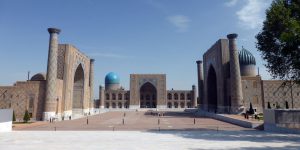
The capital of Uzbekistan, Tashkent, we have already visited. Now we are in Samarkand. We begin this sunny day, as we have finished it yesterday. We visit the Registan. What is that?

In Samarkand
It was and is the main town square. Samarkand is already 2700 years old, the Registan was the main town square during the reign of Timur; about in the middle of the 14th century . Bustle took place here. Mosques and madrassahs were built here.
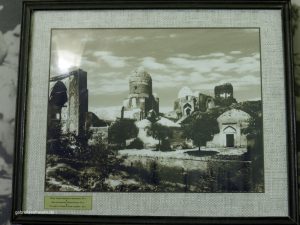
At some time the buildings fell into disrepair rapidly. Instead of mosques three beautiful madrassahs can be found now at the Registan. In the 1930 ies the reconstruction of the heavily dilapidated buildings began.
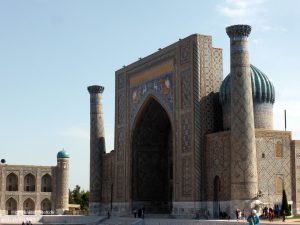
Like everywhere here in Uzbekistan you pay the admission fee plus a permission fee to take photographs. It’s worth it when the weather is good, you should stop by once in the morning and once in the afternoon, then all the buildings got the right angle of the sun. Unfortunately, it does not work with us, in the afternoon it is very cloudy.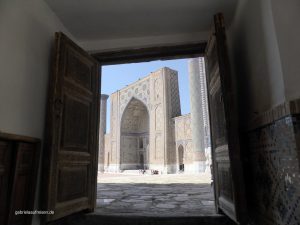
In the madrassah many small shops are housed now. Among other things, a small shop with traditional musical instruments. The owner, a master of his craft, gives us a short impression of them here.
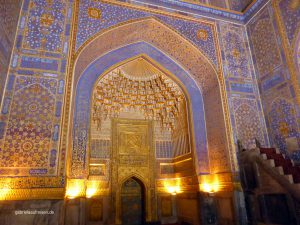
Beautiful Mosques
From the Registan we walk to the Bibi Chanim (also Bibi Xanom or Bibi Khanum) Mosque through a magnificent avenue that is lined by shops on the left and the right.
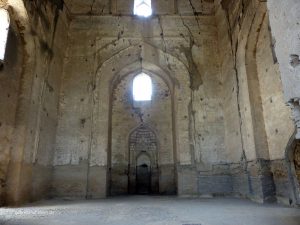
The mosque is currently undergoing restoration, but the courtyard is really worth seeing and nicely shaded. Here it is also worth, to take a little rest and watch the many different people in their partially colorful native attire.
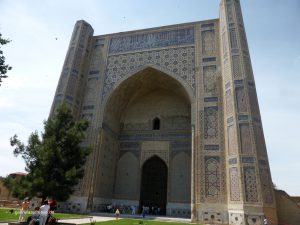
Especially the local ladies with their often golden teeth that they show off quite nicely, like us to take group photos of them. Also we are an always welcome photo motif.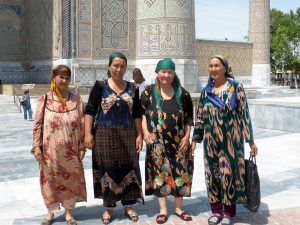
Next to the mosque is a large bazaar, which is partly covered. There is hardly anything that you cannot buy here. Start to negotiate!
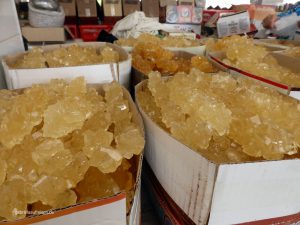
Now our stomachs growl, slightly up the road we find the Art Café. Today I’ll try a typical local noodle soup with meatballs. Really recommendable, the green tea and tasty bread may not be missing!
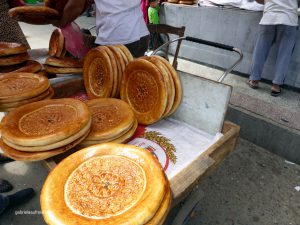
Thus fortified, the bus brings us after a short drive to the Afrosiab Museum (for the history of Samarkand), showing the different periods of the excavations of the old palace Afrosiyob and murals from the 6th century.
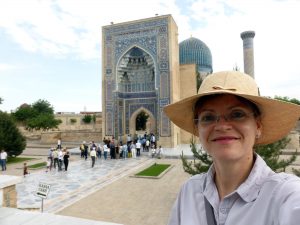
The last stop of the day is the Gur-Emir Mausoleum. Again we expect a mostly blue magnificent building. Timur, some of his sons and grandsons, as well as some spiritual mentors are buried here. About the story read in a good guide book, I prefer to let the pictures speak for themselves.

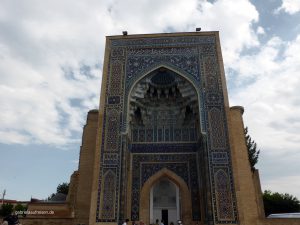
Visiting an Uzbek family
We finish the evening eating Plov in an Uzbek family. Plov is a rice dish that is served as a hemisphere. Then come sliced and cooked carrots. Above this is a layer of beef or mutton.
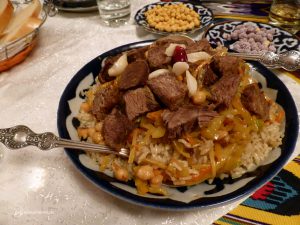
As is a custom here, I brought a guest gift. In Uzbek houses, there is always a special room just for the guests, so this as well, where we will be entertained, is equipped with many carpets and wall hangings. The three little granddaughters of the hostess look again and again curiously into the room. On the way back to the hotel we drive again past the Gur-Emir Mausoleum , which is now magnificently lit.
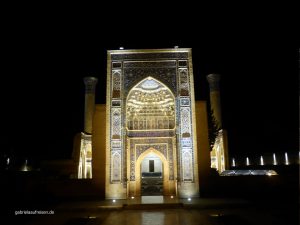
You are curious how my trip goes further on? Please like my Pinterest, Tripadvisor or my Facebook site or go to instagram. On both sites you`ll get first hand information about my travels and on travelling in general. See you there!
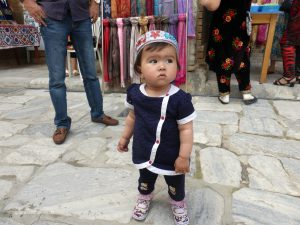
Be First to Comment